Words: Nathan Chadwick
Photography: Manufacturers
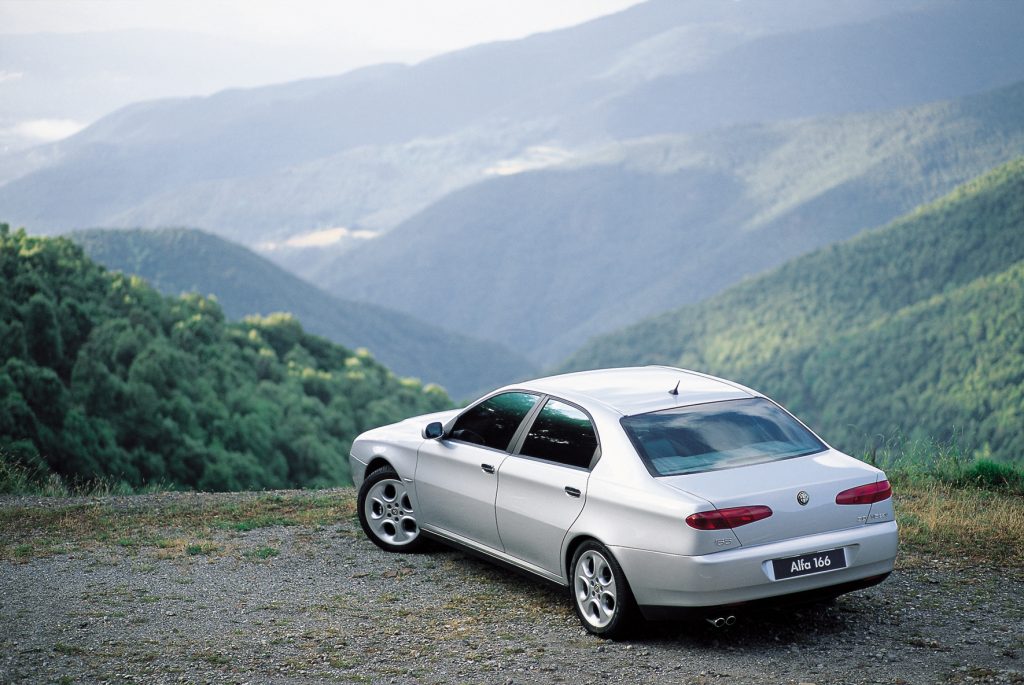
The executive saloon is on borrowed time. Everyone wants an SUV – well, that’s what we’re told – so Jaguar hasn’t replaced the XJ, Maserati has further delayed the Quattroporte and even stalwarts such as the BMW 7 Series, Mercedes S-Class and Audi A8 must be on borrowed time.
What’s also sadder is that there are few big executive saloons that aren’t from this small clutch of German marques. The DS9 and Peugeot 508 perhaps, and the Bentley Flying Spur?
Of these, it is the DS9 and Peugeot 508 that provide the inspiration for this week’s list. It used to be the case that every range had a clear top-of-the-table car, from Ford to Fiat. Sadly, even in the ’90s, the writing was on the wall for such ‘non-premium’ brands – sales weren’t great (other than to the dealer principals) and depreciation was horrifying. We’re seeing that again with the otherwise very pleasant DS9 – arguably one of the finest secondhand bargains in the UK at the moment, though spare a thought for the first owners who stumped up £50k, only to see it worth half that within 12 months.
Nevertheless, all of the cars below still represent stonking bargains – saloons always struggle to attract the classic car status the coupés, convertibles and the hot hatches in the range achieve. However, all of these offer a pleasingly different take on the executive class compared to the German alternatives. Which one would you choose?
Alfa Romeo 166

The Alfa Romeo 164 was something of a success for its maker – sharp Pininfarina lines and a choice of entertaining engines made it a compelling alternative choice.
The replacement 166 was sadly nowhere near as successful – and its still-controversial nose is largely the culprit. The rest of the car is elegant and delicate for such a big car, and the interior is magnificently comfortable – unlike a lot of Italian cars, there’s plenty of space inside, and the ergonomics are well thought out.
Then there’s the way it drives – the 164 always struggled to put the power of its Busso V6 down well, and while the 166 can still tug at the hands if you’re binary in your inputs, the sophisticated rear suspension allows for much crisper handling. The 2.0-litre four-cylinder engine may have only 155bhp, which in executive-class terms is weedy, but the positioning is far up against the bulkhead behind the front wheels – which means wonderfully neutral handling. You really can hustle it along like a very large hot hatchback.
However, this is a car that you buy purely on whether you like the styling – though the 2000s refresh made for one of the most handsome executive cars ever. By that point, the segment had moved on, and it wasn’t enough to prop up sales.
Nowadays, the elegant 166 is a pleasingly different take on big-car styling compared to the aggressive Europeans, and still great value – though values have grown in recent years, you can still pick up a great V6 model for around £3000.
Peugeot 605
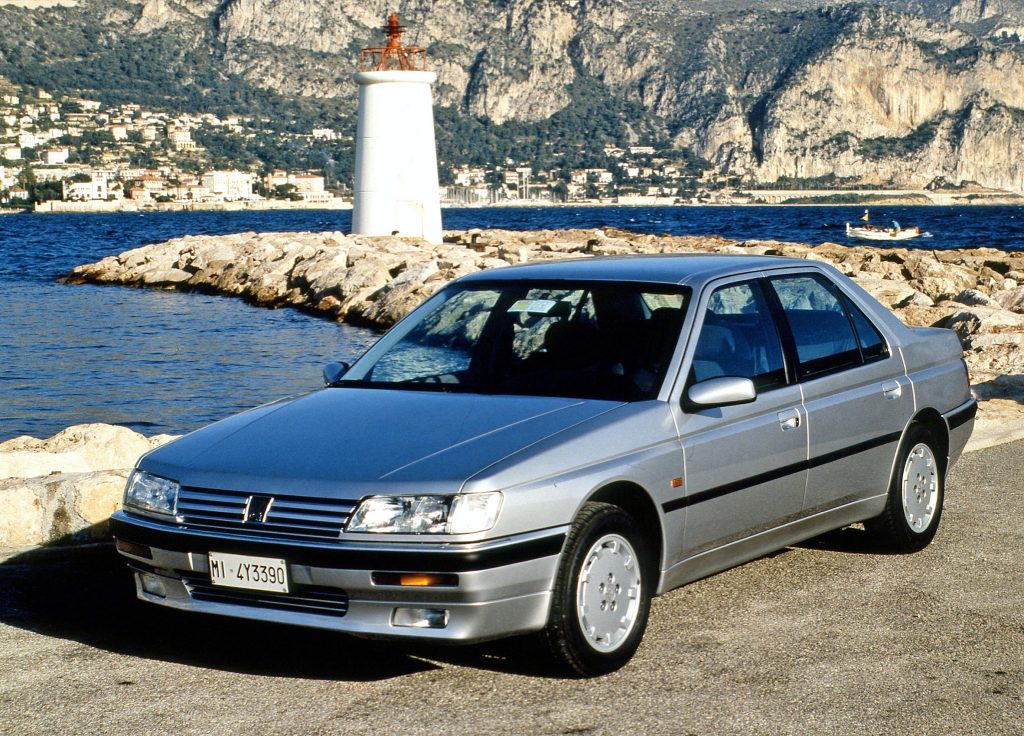
However, if you want something elegant and rare, then the Peugeot 605 has that in spades. Designed by Pininfarina along similar lines to the 405, the 605 shared its platform with the Citroën XM. Sadly, in the eyes of many, it was perhaps a little too much like the 405 and this, alongside early electrics woes, meant that very few were sold.
That’s a huge shame, as not only was the Peugeot supremely well appointed and deeply luxurious at a price where a Mercedes-Benz salesman could only snigger and point at the door, but like all Peugeots of the 1980s and 1990s, it rode and handled beautifully.
A mid-life spruce up improved the reliability and interior no end, as well as performance. However, the introduction of the stylish 406, which was larger than the 405 it replaced, further hammered 605 sales.
Nowadays, there are just 24 left running on UK roads, which is unfortunate as our engine pick is the all-alloy 24v V6 model, which offered a creamy smooth 188bhp. Apparently none of those has survived in the UK, so you’ll have to nip across the Channel to get one. There the 605 is far more appreciated – you’ll need between €4000 and €7000 to bag one of the rare 24v V6s.
Ford Granada Scorpio
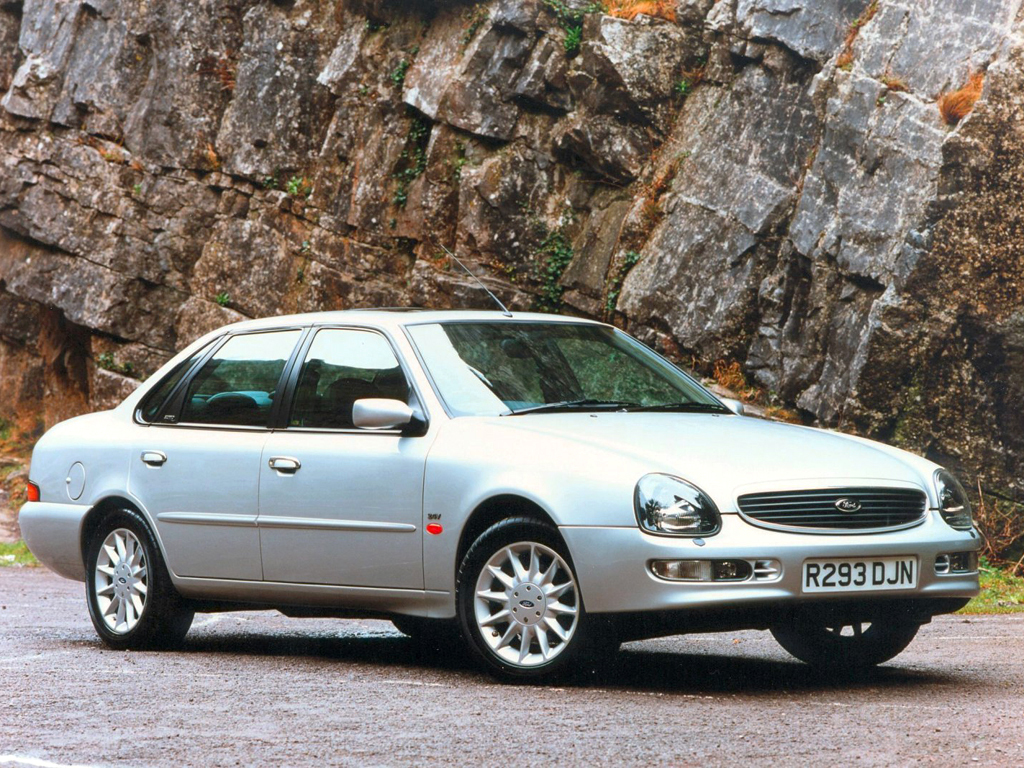
The stories surrounding the 1994 Ford Granada Scorpio are legend – tales of Blue Oval dealer principals in tears at the in-house reveal, seeing their highest-margin car destined to be a sales disaster. Then there’s the hardcore focus group process that led to its design – apparently the overwhelming favourite classic car among those polled was the Austin-Healey 3000; hence the enormous whale-like grille.
It was a disaster, and Ford never replaced the Granada Scorpio directly, though the Mondeo did grow enormously in its latter years to fulfill the secondhand private hire vehicle niche the Granada had long held. Crippling residuals made the Scorpio a stupendous bargain on the nearly new market, and today, for a reasonably fast Ford, the price of entry surprisingly doesn’t involve remortgaging your house. The equipment level is high, the Recaro seats are endlessly comfortable and the 2.9-litre 24v Cosworth V6 is a silky-smooth operator.
It will always be the butt of many a joke, but as you sink into those oh-so-comfortable seats and surge on by on a wave of V6 torque, would you really care?
Renault Safrane

The Renault 25 had been remarkably successful for its maker, with around 800,000 sold. The follow-up Safrane was designed to be much more solid than the 25 – in both chassis rigidity and build quality terms. This added 300kg of weight to the car, which did little to dampen the car’s handling abilities; it was praised for its cornering fun. The interior was also a vast improvement, though the interior wasn’t quite as aesthetically pleasing as the Gandini-styled one on the 25. However, the cable-actuated manual gearbox was a bugbear due to its fragility, and the Safrane failed to capture the imagination as deeply as the 25. Not many Safranes were sold at all – less than half the number of 25s.
The one to have is the Safrane Biturbo, which saw the talents of tuners Hartge and Irmscher combine to create a twin-turbocharged, four-wheel drive autobahn monster with 258bhp; only 806 were ever made.
Just 36 Safranes of any kind are left running on UK roads, and you’ll need to head abroad for a Safrane Biturbo – prices for those start at €13,000.
Rover 800
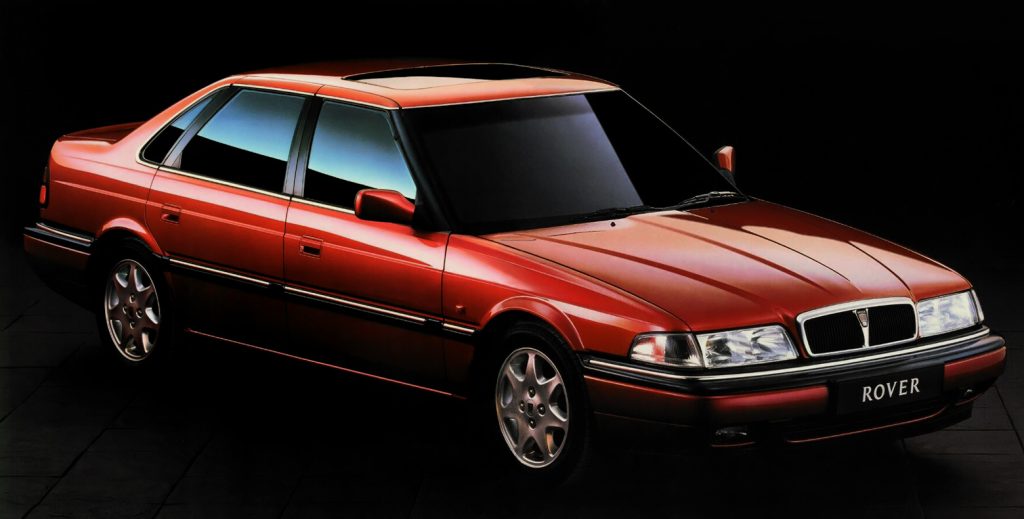
The Rover 800 occupies a strange position in the modern world. There are several copy-and-paste articles on its doomed venture in the USA under the Sterling brand, and there’s a persistent view that the car was a bit of a failure.
It really wasn’t – it was the best-selling executive car in the UK for eight years, and the reliability and finish problems over here weren’t quite as bad as in the USA – though trim rattles and electrical issues were still known.
For the MkII version for the 1990 the folded-paper design that had proved controversial in the UK yet popular in the USA was phased out for a swoopy, aerodynamic look with a large chrome grille. Up against renewed pressure from German rivals the 800 still sold reasonably well at a time when its traditional rivals – Ford and Vauxhall – gradually withdrew from the sector.
Our pick of the range would have to be the 820 Vitesse. Though six-cylinder surge appeals, the 197bhp 2.0-litre four pot makes for engaging performance and nimbler handling, and the gearbox bearing problems that plagued the car when new has now been addressed. However, Rover 800s of all kinds are now exceptionally rare, though not quite to the levels of some of the others on this list.
Citroën XM
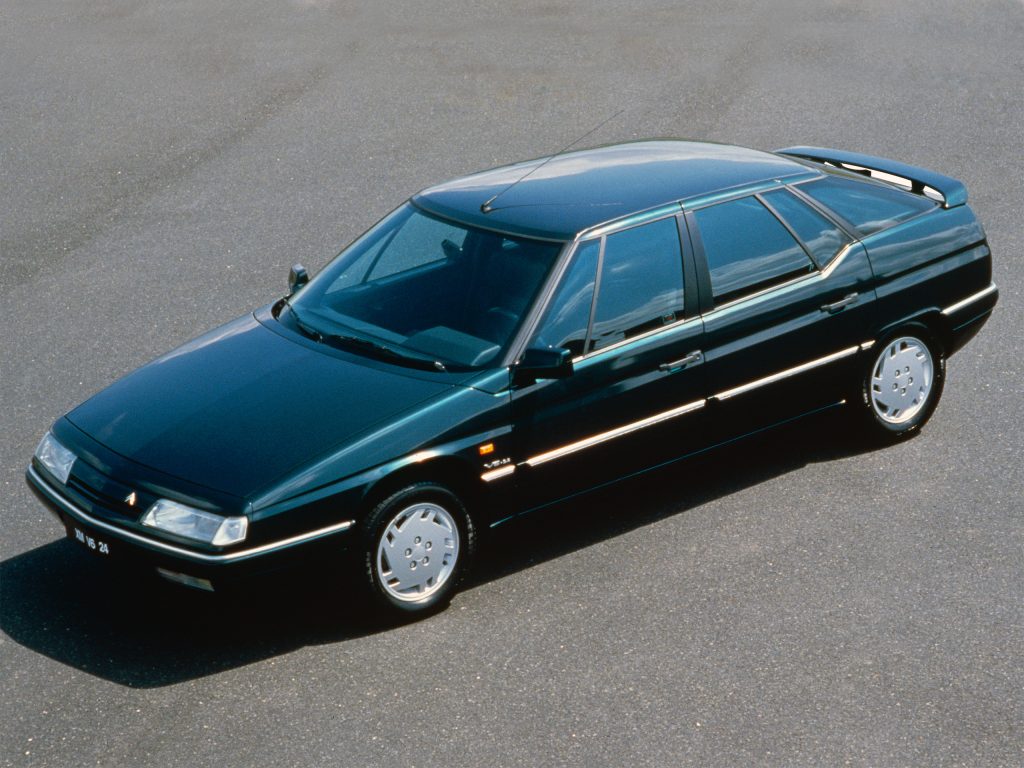
The CX was more than a car – it was a defiant statement of Citroën-ness against a world that was becoming rather more homogenised. Following it up was quite a challenge, and the XM’s concept car looks courtesy of Bertone’s Marc Deschamps certainly lived up to the ‘alternative thinking’ so beloved of Citroën. It was received well, winning the European Car of the Year, receiving praise for its comfort and equipment levels.
However, it was launched into the eye of a global recession and its styling proved to be a little too challenging, even among Citroën types, as was the loss of the DIRAVI steering system on anything other than the LHD 3.0-litre V6. A 50 per cent growth in prices over the outgoing CX didn’t help either, but perhaps the biggest problem was that most buyers increasingly wanted sporty handling and performance from their executive saloon. That was something for which the Citroën XM wasn’t designed for – its hydropneumatic self-leveling suspension was all set up for a magic carpet ride.
Our pick would be a V6-powered model, though it is the diesels that have survived in greater numbers.
Vauxhall Omega

When the Senator went off sale in 1993, the Omega – the replacement for the much-admired Carlton – took over as the top-of-the-range saloon. It caused quite a stir with its coupé-like looks and thanks to Ford’s disastrous Scorpio launch, the Omega proved to be a popular alternative choice.
However, it couldn’t stop the onslaught from the German opposition, though Opel did try. It set about producing a V8 version, using the General Motors LS1 V8. However, extensive testing led to reliability concerns that would take far too long to rectify, as the Omega was due to go off sale in 2003. Transmission problems were also a challenge. The Omega’s essential package would eventually get a V8 – in Australia. The chassis would form the basis of the Holden Commodore and Monaro, which would in turn eventually come to the UK as the Vauxhall VXR8 and Monaro respectively.
Like a lot of Vauxhalls, the Omega has struggled to be loved in classic circles as much as even the Scorpio. However, the V6 model has survived in good numbers – and this comfortable cruiser deserves recognition as being the last of the non-premium breed among the ‘home’ marques. The Omega lasted until 2003, whereas the Ford and Rover tapped out in 1998 and 1999 respectively.
Which executive saloon would you choose? We would love to hear from you at hdc@hagerty.co.uk.